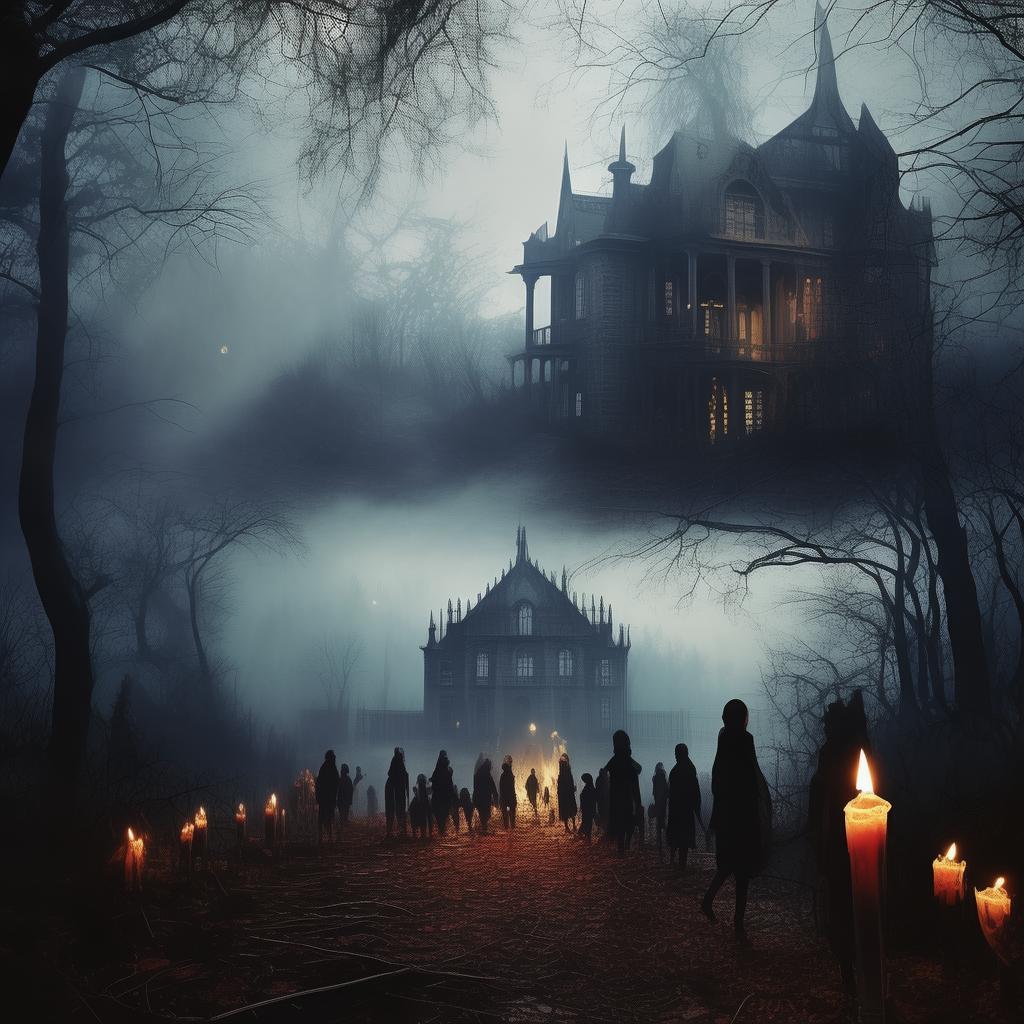The Echoes of a Haunted Canvas
In the heart of a tranquil Norwegian village, nestled among the towering fjords and whispering forests, there stood an old, cobblestone house that was said to be haunted. The villagers spoke of ghostly apparitions and inexplicable occurrences, but no one dared to live there. That was until a young artist named Eliza moved in, drawn to the house by an inexplicable pull.
Eliza had always been fascinated by Munch's "The Scream," a painting that seemed to embody the very essence of human despair. She had heard tales of the painting's eerie history and its connection to a series of unsolved murders in the village. Determined to uncover the truth behind the legend, Eliza began her research, which led her to the old house and its mysterious inhabitants.
The house was a labyrinth of dark corridors and forgotten rooms, each echoing with a haunting silence. Eliza's first discovery was a dusty, ornate frame, which she recognized as the original casing for "The Scream." She carefully opened it, revealing a haunting portrait of a woman's face, her eyes wide with terror, her mouth agape as if screaming in silent horror.
Intrigued, Eliza delved deeper into the painting's history. She learned that the woman in the painting, known as the Melancholic Muse, had been a revered artist in her time, her works shrouded in mystery and controversy. According to legend, she had been driven mad by the screams she heard in the night, and her paintings were the echoes of her own terror.
As Eliza's obsession with the painting grew, so did the haunting in the house. She would hear whispers, feel cold drafts, and see shadows moving where there should be none. But it was the painting itself that began to change. The woman's eyes seemed to follow her, and the scream seemed to grow louder, more desperate.
One night, as Eliza lay in bed, the whispers grew louder, and the painting began to glow with an eerie light. She saw the woman's face twist in a hideous parody of her original features, and a sense of dread washed over her. She realized that the painting was not just a silent witness to the past; it was alive, and it was calling out for help.
Determined to uncover the truth, Eliza sought the help of an old historian, who had been researching the Melancholic Muse for years. Together, they discovered that the woman's paintings were not just expressions of her own fear, but they held hidden messages, cryptic clues to a series of murders that had taken place in the village.
The historian revealed that the Melancholic Muse had been the target of a jealous rival, who had sought to destroy her reputation and her life. The rival had planted false evidence and manipulated the village's superstitions to frame the Muse for the murders. But the truth was that the Muse had been the only one who had seen the real killer, and her scream had been the first warning.
Eliza and the historian decided to follow the clues left by the Melancholic Muse, leading them to the old village church. There, they found a hidden compartment behind the altar, containing a collection of old letters and photographs that told the story of the Muse's final days. The letters revealed that the rival had been her own brother, driven by jealousy and ambition to destroy her.

As they pieced together the story, Eliza and the historian realized that the painting was not just a silent witness; it was the final message from the Melancholic Muse. The painting's transformation was a result of her spirit being trapped within, unable to rest until her story was told.
With the truth uncovered, Eliza performed a ritual to release the spirit of the Melancholic Muse, and the painting returned to its original state. The hauntings in the house ceased, and the village began to heal from the years of superstition and fear.
Eliza's journey had not only uncovered the truth behind "The Scream" but had also brought her closer to her own artistic calling. The painting had become a symbol of her own struggles with fear and the power of art to convey the deepest human emotions.
In the end, Eliza realized that the Melancholic Muse was not just a figure from the past but a muse for her own creativity, a reminder that even in the darkest of times, art can bring light and understanding.
✨ Original Statement ✨
All articles published on this website (including but not limited to text, images, videos, and other content) are original or authorized for reposting and are protected by relevant laws. Without the explicit written permission of this website, no individual or organization may copy, modify, repost, or use the content for commercial purposes.
If you need to quote or cooperate, please contact this site for authorization. We reserve the right to pursue legal responsibility for any unauthorized use.
Hereby declared.









